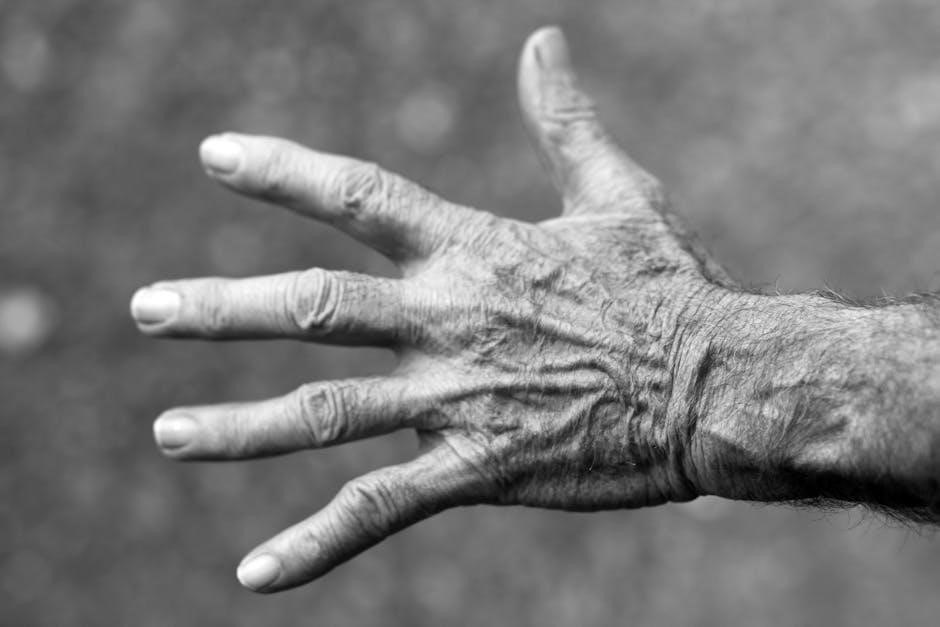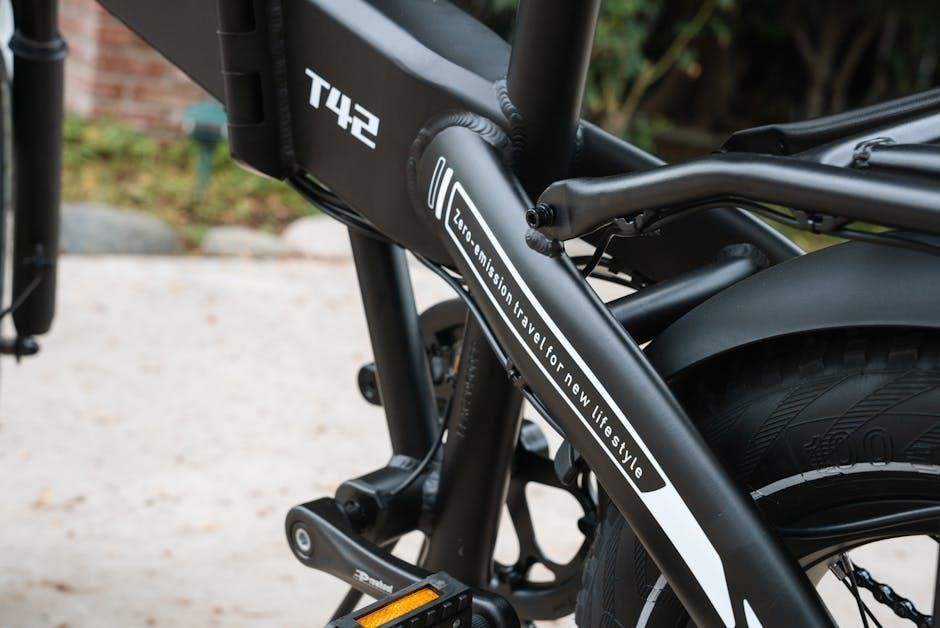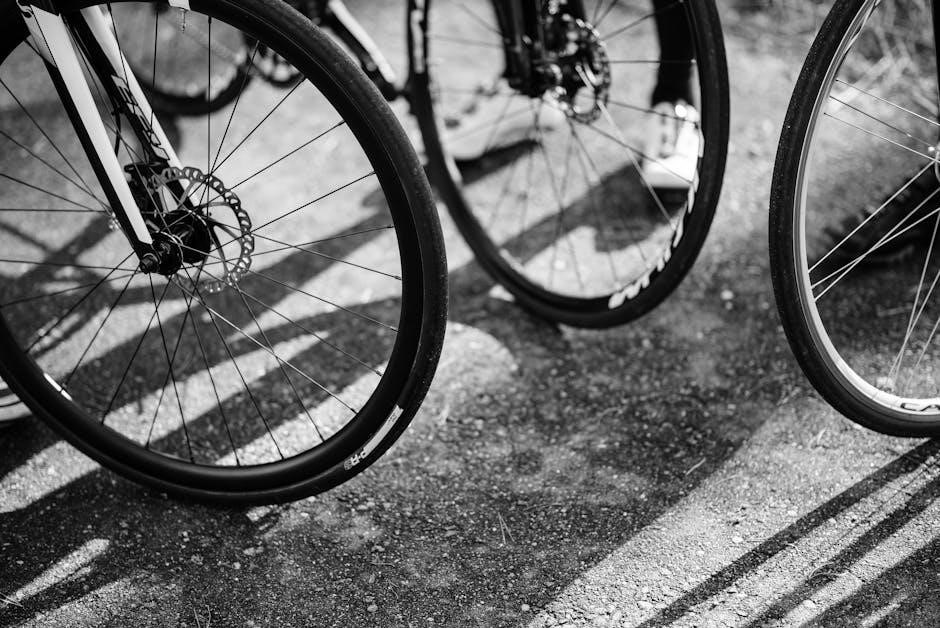dash mandoline slicer manual
The Dash Mandoline Slicer is a versatile kitchen essential designed for precise slicing and convenience. With its Safe Slice Technology, it ensures easy and secure food preparation, making it ideal for home cooks and professionals alike. Perfect for creating uniform slices, it offers adjustable thickness settings and dishwasher-safe design for hassle-free maintenance. This tool is a must-have for anyone looking to elevate their cooking experience with efficiency and safety.
1.1 Overview of the Dash Mandoline Slicer
The Dash Mandoline Slicer is a versatile kitchen tool designed for precise slicing and food preparation. It features Safe Slice Technology for secure cutting and adjustable thickness settings, allowing users to customize slices from thin to thick. Compact and dishwasher-safe, it includes a recipe guide for inspiration. Its foldable design ensures easy storage, making it a practical addition to any kitchen setup for home cooks and professionals alike.
1.2 Key Features and Benefits
The Dash Mandoline Slicer offers Safe Slice Technology for secure cutting, adjustable thickness settings with 40 levels, and a foldable design for easy storage. It is dishwasher-safe and includes a detail brush for maintenance. The slicer comes with a recipe guide, inspiring creativity in the kitchen. Its compact and lightweight build makes it a practical tool for precise slicing, enhancing both convenience and efficiency in food preparation.

Safety Features of the Dash Mandoline Slicer
The Dash Mandoline Slicer features Safe Slice Technology, ensuring secure cutting and minimizing accidents. Its design includes protective mechanisms to safeguard users while slicing, enhancing overall safety during use.
2.1 Safe Slice Technology
The Dash Mandoline Slicer’s Safe Slice Technology ensures secure and accident-free slicing. A protective guard holds food firmly, preventing direct contact with the blade. This innovative feature minimizes risks, allowing users to slice confidently. Designed for safety, it enables precise cuts while keeping fingers protected, making it a reliable tool for home cooks and professionals alike.
2.2 Handling and Safety Precautions
Always handle the Dash Mandoline Slicer with care to ensure safety. Use the protective guard to prevent finger contact with the blade. Maintain a firm grip on the handle and slice away from your body. Avoid touching the blade directly and store it securely when not in use. Regularly clean and maintain the slicer to ensure optimal performance and longevity.
Getting Started with the Dash Mandoline Slicer
Unbox and wash the slicer thoroughly before first use. Familiarize yourself with the components and adjustable features. Follow the manual for proper assembly and initial setup.
3.1 Unboxing and Initial Setup
Excitingly unbox your Dash Mandoline Slicer and discover its sleek design. Inside, you’ll find the mandoline body, safety guard, and recipe guide. Before first use, wash all parts with warm soapy water. Dry thoroughly to prevent rust. Familiarize yourself with the components and their functions. Store the slicer in its compact folded form to save space. Ensure all parts are securely assembled for safe operation.
3.2 Understanding the Thickness Adjustment Dial
The Dash Mandoline Slicer features a convenient thickness adjustment dial, allowing you to customize slice thickness with precision. Simply turn the dial to choose from 40 levels of thickness, ensuring perfect results for any recipe. The ergonomic design makes it easy to adjust while slicing, providing consistent cuts every time. This feature enhances versatility, making it ideal for various kitchen tasks, from thin potato chips to hearty vegetable slices.
Using the Dash Mandoline Slicer
The Dash Mandoline Slicer is designed for effortless food preparation, offering precise slicing with minimal effort. Its intuitive design ensures safe and efficient cutting, making it a must-have for home cooks and professionals seeking consistent results.
4.1 Step-by-Step Guide to Slicing
Place the Dash Mandoline Slicer on a stable surface. 2. Adjust the thickness dial to your desired setting. 3. Position the food item securely on the slicer. 4. Hold the food firmly and slice in a smooth, even motion. 5. Collect the perfectly sliced ingredients. Always use the included safety guard for optimal protection and precise results.
4.2 Basic Cutting Techniques
For basic slicing, place the food item on the mandoline and hold it firmly. Use the included safety guard to protect your hands. Gently press down and slide the food across the blade in a smooth, even motion. Adjust the thickness dial for desired results. This method ensures uniform slices and minimizes waste. Always maintain a stable surface for optimal control and safety.
4.3 Advanced Cutting Options
The Dash Mandoline Slicer offers advanced cutting techniques like julienning, waffle cuts, and ripple slices. Use the adjustable thickness dial to achieve precise results. For julienning, slice vegetables thinly and stack them for strips. Waffle cuts are made by rocking the blade, while ripple slices use the textured blade. These options expand your culinary creativity, allowing you to prepare intricate dishes with ease and precision.
Maintenance and Cleaning
Regularly clean the Dash Mandoline Slicer by handwashing with the included detail brush or placing it on the dishwasher’s top rack. Always dry thoroughly after cleaning to prevent rust and ensure longevity. Proper maintenance ensures optimal performance and safety during use.
5.1 Cleaning the Mandoline Slicer
Cleaning the Dash Mandoline Slicer is straightforward. It is dishwasher safe and can be placed on the top rack for convenient cleaning. For handwashing, use mild soap and the included detail brush to remove food particles. Regular cleaning ensures optimal performance and prevents rust. Always dry thoroughly after washing to maintain its durability and hygiene.
5.2 Storage Tips
Store the Dash Mandoline Slicer in a cool, dry place to prevent rust. Fold it sleekly for compact storage in drawers or cabinets. Use the included storage cover to protect the blade and ensure safety. Avoid exposing it to humidity for extended periods. Proper storage maintains its durability and keeps it ready for future use, ensuring long-lasting performance and convenience.

Accessories and Additional Features
The Dash Mandoline Slicer comes with a recipe guide for inspiration and a detail brush for cleaning. Its foldable design allows for easy storage, enhancing convenience and organization in your kitchen.
6.1 Included Accessories
The Dash Mandoline Slicer includes a recipe guide with ideas for dishes like coleslaw and potato chips. It also comes with a detail brush for cleaning hard-to-reach areas. Additionally, the slicer features a foldable design for easy storage, making it a practical addition to any kitchen. These accessories enhance functionality and convenience, ensuring a seamless cooking experience.
6.2 Optional Accessories
Optional accessories for the Dash Mandoline Slicer include additional blades for specialized cuts and a storage case for organization. These extras can enhance functionality and convenience, allowing users to customize their slicing experience. While not essential, they provide added versatility for advanced cooking tasks and long-term maintenance of the slicer.

Recipe Ideas and Inspiration
The Dash Mandoline Slicer inspires creativity in the kitchen, offering endless possibilities for fresh salads, perfectly sliced vegetables, and evenly cut fruits. Its precision makes food prep quick and easy, allowing users to explore a variety of dishes with professional results;
7.1 Coleslaw Recipe
Transform your meals with a fresh coleslaw recipe using the Dash Mandoline Slicer. Slice cabbage and carrots to uniform thickness for a crisp, professional texture; The adjustable dial ensures perfect, even cuts every time. Combine with your favorite dressing for a quick, healthy side dish. The included recipe guide offers inspiration for delicious, easy-to-make coleslaw that complements any meal, making prep a breeze with the Dash Mandoline Slicer.
7.2 Potato Chips Recipe
Create crispy, homemade potato chips with the Dash Mandoline Slicer. Slice potatoes to your desired thickness using the adjustable dial for uniform results. Fry in oil until golden or bake for a healthier option. Season with salt or herbs for flavor. The included recipe guide offers tips for achieving the perfect crunch, making it easy to enjoy fresh, delicious potato chips at home with minimal effort.

Troubleshooting Common Issues
Common issues include blade dullness or incorrect thickness settings. Ensure proper assembly, cleanliness, and check for blockages. Refer to the manual for detailed solutions.

8.1 Blade Not Cutting Properly
If the blade isn’t cutting properly, check for blockages or food residue. Ensure the mandoline is assembled correctly and the blade is clean. Use the included detail brush to remove debris. If issues persist, refer to the manual for troubleshooting steps or consider blade replacement. Proper maintenance ensures optimal performance and safety.
8.2 Adjusting Thickness Levels
The Dash Mandoline Slicer features a convenient thickness adjustment dial, allowing you to customize slices from thin to thick. To adjust, simply rotate the dial to one of the 40 available settings. Ensure the dial is clean and free from food residue for smooth operation. This feature ensures precision and versatility for various recipes, making it easy to achieve consistent results every time.
Comparing the Dash Mandoline Slicer to Other Models
The Dash Mandoline Slicer stands out with its Safe Slice Technology and 40 adjustable thickness levels. Its foldable design and dishwasher-safe construction make it more convenient than many competitors, offering both safety and efficiency for home cooks and professionals alike.
9.1 Unique Selling Points
The Dash Mandoline Slicer excels with its Safe Slice Technology, ensuring secure handling while slicing. It offers 40 adjustable thickness levels for precision cutting and features a foldable design for easy storage. Additionally, it includes a recipe guide for inspiration, making it a versatile and user-friendly tool that combines safety, convenience, and creativity in the kitchen.
9.2 How It Stands Out in the Market
The Dash Mandoline Slicer distinguishes itself with its innovative Safe Slice Technology, reducing accidents while slicing. Its 40 adjustable thickness levels and foldable design offer unmatched versatility and convenience. The included recipe guide adds value, inspiring creativity in the kitchen. With its eco-friendly and space-saving design, it appeals to both eco-conscious users and those seeking practicality, making it a standout choice in the market.
Warranty and Customer Support
The Dash Mandoline Slicer comes with a 1-year warranty, ensuring protection against defects. Dedicated customer support is available for inquiries, and the manual provides detailed guidance for troubleshooting and maintenance.
10.1 Warranty Information
The Dash Mandoline Slicer is backed by a 1-year limited warranty, covering manufacturing defects. This warranty ensures customers receive a replacement or repair if the product fails under normal use. For details, refer to the manual or contact customer support. The warranty underscores Dash’s commitment to quality and customer satisfaction, providing peace of mind with every purchase.
10.2 Contacting Customer Service
For assistance with the Dash Mandoline Slicer, customers can reach out to Dash’s customer service team via phone, email, or through their official website. The manual provides detailed contact information, ensuring quick support for any inquiries or issues. Representatives are available to address concerns, offer troubleshooting tips, and provide warranty-related assistance, making it easy to resolve any problems promptly and efficiently.
User Reviews and Feedback
Users praise the Dash Mandoline Slicer for its ease of use, durability, and versatility. With a 4.5-star rating and over 10,000 reviews, it’s a top choice for home cooks and professionals alike.
11.1 Positive Reviews
The Dash Mandoline Slicer has received widespread acclaim for its ease of use, durability, and versatility. Users highlight its ability to deliver precise, uniform slices effortlessly. Many appreciate its dishwasher-safe design and compact storage. The included recipe guide is a bonus, inspiring creativity in the kitchen. With a 4.5-star rating and over 10,000 reviews, it’s a top choice for home cooks and professionals alike.
11.2 Common Complaints
Some users report that the Dash Mandoline Slicer’s blade can dull over time, requiring frequent sharpening. Others find the handle uncomfortable during prolonged use. A few mention difficulty with the thickness adjustment dial, while some note that cleaning between the blades can be tedious. Despite these issues, the slicer remains a popular choice for its overall performance and value.

Tips for Getting the Most Out of Your Mandoline Slicer
Experiment with different blade settings and techniques to achieve desired results. Regularly clean and maintain the slicer for optimal performance. Store it safely to preserve sharpness and longevity.
12.1 Choosing the Right Blades
Selecting the appropriate blade for your Dash Mandoline Slicer ensures precise cuts. Opt for the straight blade for even slices and the julienne blade for strips. Regularly clean and store blades to maintain sharpness and longevity. Refer to the manual for guidance on blade selection and maintenance to optimize your slicing experience.
12.2 Optimizing Your Slicing Experience
To enhance your slicing experience with the Dash Mandoline Slicer, ensure proper blade alignment and use the thickness adjustment dial for consistent results. Always slice firm vegetables first to maintain blade sharpness. Regularly clean the tool and store it securely. Experiment with various recipes, like coleslaw or potato chips, to explore its full potential and make meal prep efficient and enjoyable.

Environmental Considerations
The Dash Mandoline Slicer features an eco-friendly design with recyclable materials, promoting sustainability. Its compact, space-saving construction reduces storage needs, aligning with environmentally conscious kitchen practices and efficient use of resources.
13.1 Eco-Friendly Design
The Dash Mandoline Slicer is crafted with eco-conscious materials, ensuring durability while minimizing environmental impact. Its compact, foldable design optimizes storage, reducing space needs and promoting efficient use of resources. The dishwasher-safe feature and included detail brush encourage thorough cleaning without excessive water usage, aligning with sustainable kitchen practices. This design reflects a commitment to both functionality and environmental responsibility, making it a greener choice for home cooks.
13.2 Recycling Options
The Dash Mandoline Slicer is designed with recyclable materials, supporting eco-friendly disposal. Users can recycle the stainless steel blade and plastic components through local recycling programs. Proper disassembly and separation of materials ensure responsible recycling. Check with local facilities for guidelines on processing small kitchen appliances and electronic components, promoting sustainability and reducing environmental impact effectively.

Compatibility with Other Kitchen Tools
The Dash Mandoline Slicer seamlessly integrates with other kitchen tools, enhancing your workflow. It pairs well with food processors, stand mixers, and cutting boards, ensuring efficient meal preparation and versatility in the kitchen.
14.1 Using with Other Dash Products
The Dash Mandoline Slicer is designed to work seamlessly with other Dash kitchen appliances, such as food processors and stand mixers. This integration allows for a coordinated and efficient cooking experience, ensuring consistent results. By combining the mandoline slicer with other Dash products, users can streamline their food preparation process, enhancing both creativity and productivity in the kitchen.
14.2 Integration into Your Kitchen Workflow
The Dash Mandoline Slicer easily integrates into your kitchen workflow, offering a compact design that saves space. Its foldable feature allows for sleek storage, while the included recipe guide provides inspiration for various dishes. By incorporating this tool into your routine, you can simplify meal prep, ensuring a smooth and efficient cooking process that complements your existing kitchen tools and appliances.
The History of Mandoline Slicers
Mandoline slicers have evolved from traditional French designs to modern innovations like the Dash Mandoline Slicer, blending heritage with advanced safety features for today’s kitchens.

15.1 Evolution of Mandoline Slicers
Mandoline slicers originated in France, with early models featuring simple, flat surfaces and straight or julienne blades. Over time, safety improvements like hand guards and adjustable blades emerged. Modern designs, such as the Dash Mandoline Slicer, incorporate advanced materials and ergonomic features, making them more versatile and user-friendly while maintaining the traditional slicing precision that has made them kitchen essentials for centuries.
15.2 How Dash Innovates the Tradition
Dash reimagines the classic mandoline slicer with modern innovations like Safe Slice Technology, ensuring safer cutting experiences. Its adjustable thickness dial and dishwasher-safe design enhance convenience. By integrating ergonomic features and user-friendly designs, Dash bridges tradition with contemporary needs, offering a tool that honors the past while catering to today’s home cooks and professionals with efficiency and style.
The Dash Mandoline Slicer is a game-changer for home cooks, offering safety, precision, and ease. Its innovative design and versatility make it a must-have for enhancing your culinary creations effortlessly.
16.1 Summary of Key Points
The Dash Mandoline Slicer excels with its Safe Slice Technology, ensuring secure and precise cuts. Its adjustable thickness dial offers versatility for various recipes. Designed for ease, it includes a recipe guide and is dishwasher-safe. The foldable design simplifies storage, making it a practical addition to any kitchen. With its innovative features and user-friendly design, it enhances cooking efficiency and safety for home cooks and professionals alike.
16.2 Final Recommendations
For optimal performance, always use the Dash Mandoline Slicer with the safety guard and follow the manual’s guidelines. Regularly clean and maintain the blade for longevity. Experiment with the adjustable thickness dial to explore various recipes. Store it folded to save space. This versatile tool is a valuable addition to any kitchen, offering both convenience and precision for home cooks and professionals alike.


























































































